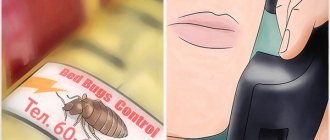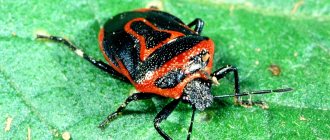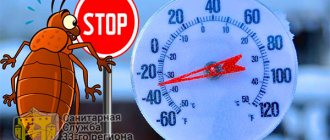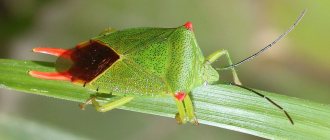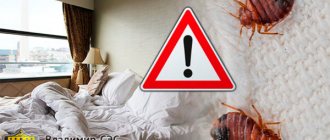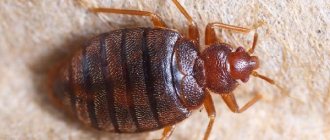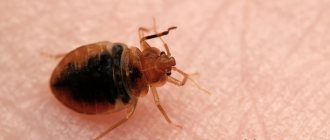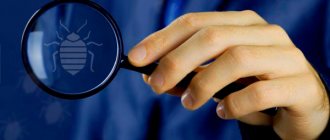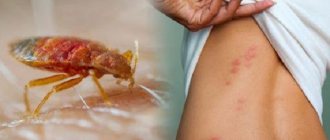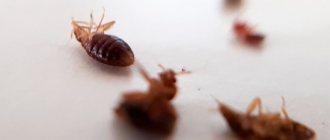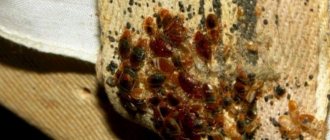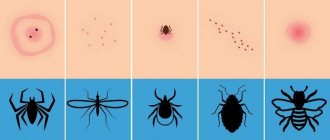Bed bugs photo. How to get rid of bedbugs at home? No way. Just look at real photographs of bed bug infestations in apartments and houses. Without our experienced disinfector, it is very difficult to cope with such situations on your own.
Bed bugs and their photos
NOTE! All photographs of bed bugs and foci of infestation are unique and were taken by our specialists during pest control activities. We hope that photos of bedbugs will help you identify these blood-sucking parasites in your home.
Bed bugs photo. How to get rid of bedbugs at home? No way. Just look at real photographs of bed bug infestations in apartments and houses. Without our experienced disinfector, it is very difficult to cope with such situations on your own. Below are the nests of domestic bugs in the apartment and their photos. If you notice in your apartment something similar to the photo below. There is no doubt that there are bedbugs in the apartment.
How can you tell if there are bedbugs in your house?
Of course, the obvious sign that you have bedbugs in your home is to see them. The photographs of bedbugs presented above clearly demonstrate the situation when bedbugs appear in the house. Carefully inspect your sleeping area; you can find them in the most secluded corners, in the joints of the frame, in the seams of the mattress and folds of fabric. Also, if the bed is light, then you will find the remains of bed bugs, many black dots. This is also a sure sign. Also, when changing bedding, you can find the remains of chitinous membranes after molting and dead insects. Has it happened to many people that when picking berries, such as raspberries, you accidentally crushed a bug? Remember this smell? So bed bugs smell the same, perhaps less intensely. The smell of bedbugs can also indicate their presence in the room. In America there are even services that search for bedbugs by smell using trained dogs. If you find brown spots, smeared blood and crushed insects on the bed. Then rest assured, these are bedbugs.
Let's recognize the enemy by sight
Bed bugs have a number of signs that make them easy to identify. First of all, this is the absence of wings, which makes the pest flatter and more invulnerable. In the process of evolution, bedbugs lost their wings, and it became possible to crawl and hide in the narrowest crevices.
And if you want to crush the little bloodsucker, you will need to arm yourself! Yes Yes exactly! After all, an insect is able to press itself so tightly to the surface that when you press on it with your finger, nothing simply happens to it. The bug needs this ability to squeeze in order to avoid being accidentally crushed by its victim during sleep if the person starts tossing and turning. But this only applies to hungry parasites.
A well-fed insect is not so invulnerable: after drinking blood, the bloodsucker’s body becomes larger and more elastic, and it is much easier to deal with it. It is for this reason that you may see small blood spots on your bed linen in the morning. This is nothing more than a well-fed bug crushed by you!
The size of an adult parasite is approximately 5 -8 mm. Segments are clearly visible on its body, as if the body of the parasite is stretched several times by invisible stripes.
Depending on the saturation of the insect with blood, its color and shape changes. In the photo below you can trace the changes that occur with the parasite as it becomes saturated
The bug grows in length and is no longer so round. The insect also darkens, acquiring a dark brown color.
What do bed bugs look like? Photo
People who encounter bedbugs and their bites do not always immediately understand what is happening in their home. Many believe that the cause of the appearance of red spots on the body is an allergy, and they begin to zealously search for the cause. In the early stages of its development, a bed bug can be confused with a small cockroach, flea or tick. Many city residents, far from the world of insects, may first hear about a bedbug at an appointment with an allergist, where they often come for an explanation of the origin of the red spots - bites - on their bodies.
It is worth being aware of what bed bugs look like because if they appear, you will not be lost in guessing and waste precious time, but will immediately begin to fight them.
Bed bugs (cimex lectularius) are wingless parasitic insects with an oval, flattened body and a size of up to 8 mm. The color of a hungry parasite can be dirty yellow or dark brown. After the linen bug has had its fill of blood, the color changes to scarlet or black, and the body itself becomes more rounded and inactive. Bite marks on a person’s body are clearly visible and resemble tracks - several punctures almost on the same line. Quite often, bites in children can cause an allergic reaction. Read about other dangerous bedbugs in our relevant articles. The larvae externally resemble adults, but are smaller in size and lighter in color, and those that have recently hatched are generally transparent. It is possible to notice them without difficulty only after the parasite has had its fill of blood. Then the stomach with a drop of drunk blood is clearly visible in its transparent body. The parasite eggs laid resemble smaller grains of rice. Elongated shape, white color and length 1 mm. Having glands with a special substance (secret), they have a specific smell when crushed. People call this unpleasant smell the smell of a bug. Difference from other parasites living in the house: The bug, unlike the cockroach, does not have processes in the back in the form of antennae and wings. Its body is more round and smaller in size. To distinguish a bedbug from a tick, you will need to count its legs. The mite is an arachnid parasite and has 8 limbs, but the bedbug has 6. It is more difficult to confuse a bedbug with an ant, but their larvae are very similar. The eggs of the former are wider and shorter. The optimal temperature for good functioning of the parasite is +15 - + 30ºС. These indicators are most often present in a person’s bedroom.
REFERENCE! At low temperatures down to -15ºС, the parasite does not die, but only falls into suspended animation. As soon as the conditions for survival improve, he moves away from this state and safely continues his life activities.
Where do bedbugs come from in the house and why are they dangerous?
It is a mistake to believe that bedbugs can only appear in old Soviet apartments that have not been renovated for several decades. Parasites can appear even in the cleanest room with new renovations and furniture. Since bedbugs have practically no natural enemies in a human home, and a food source is always nearby, they feel very comfortable here.
Apartments with perfect cleanliness and high-quality repairs can also have bedbugs
Bedbugs easily penetrate apartments on any floor. Thanks to their flat body, they crawl through narrow cracks and hide in the most difficult places for humans to reach. Bedbugs cannot fly or jump, but they can move very quickly. They climb to great heights and easily crawl along the outer walls of houses from one window to another. Bedbugs cover the distance between apartments quickly, so if they have appeared in the apartment of one of your neighbors, they will soon appear in yours too.
How do bedbugs get into the house?
There are practically no obstacles for the small flat body of the bug. The parasite enters the apartment as follows:
- through cracks in the doorway;
- open windows and doors;
- ventilation holes;
- joints of pipes and ceiling/floor;
- on clothes and shoes;
- with purchased furniture, especially used;
- on the paws of pets, etc.
Parasites often enter the house through ventilation holes.
There are many ways for bedbugs to enter an apartment. This could be an infested apartment or hotel, from where several bedbugs were brought into the house on clothes or in a bag, or purchased furniture, including completely new ones. A furniture warehouse often becomes a breeding ground for parasites. Over thousands of years, bedbugs have learned to instinctively “calculate” places that will sooner or later lead them to human habitation.
Why are bedbugs dangerous for humans?
For humans, bedbugs do not pose a potential danger, but they significantly reduce the quality of life in general. They are nocturnal, so they interfere with proper sleep. Bedbugs become active in the second half of the night, closer to the morning, as a result of which a person constantly does not get enough sleep. Red dots appear at the bite sites, which itch and take a long time to heal, and sometimes allergic reactions occur.
Bedbugs are not carriers of infectious diseases, unlike fleas and mosquitoes. And although the causative agents of many dangerous diseases were found in the body of this parasite, no cases of human infection were identified.
Young children suffer the most from bedbug bites. The fact is that children's skin is much more delicate and thinner than that of an adult, and the blood vessels are located closer to the surface of the body. In addition, children are more likely to experience allergic reactions to bedbug bites: blisters may appear, and in rare cases even angioedema. The wounds are painful, very itchy and take a long time to heal, and the child constantly tries to scratch them, which can lead to infection.
Children often develop blisters at the sites of bites.
Constant lack of sleep, itching and painful sensations prevent you from living fully. In particularly sensitive people, parasite bites can provoke neuroses, nightmares and fear of going to bed.
The bite of an adult is painless, which cannot be said about the larva. The fact is that the saliva of adult bedbugs contains a special anesthetic substance. It anesthetizes the bite, and the bloodsucker peacefully sucks blood until it is completely saturated.
How to determine the presence of bedbugs in a room?
Due to the fact that the activity of these insects manifests itself at night, it is possible to learn about their existence only when their numbers increase significantly. But certain signs can still alert the residents of the house. These include: Bites appear on the body. They can be large or almost invisible (depending on the reaction of the human body). The bedbug especially loves to bite women and children. Their skin is more delicate and easier to bite through. There will be several bites on the body, due to the fact that the parasite, crawling across the body, is looking for a more convenient place to suck blood. Bed linen has red or brown spots.
These spots appear from crushed bedbugs that fell under a person after they had already sucked blood. The body of a hungry bug is flat, which facilitates its movement, but after the parasite has eaten, it can easily burst under the weight of a person. On the bed, in the folds of upholstery on sofas and in blankets, you can find the remains of bedbug skins and eggs that remain after molting. By the way, sofa bugs do not exist as a separate species. They were named so from their habitat in the sofa - these are ordinary bloodsuckers, their photos are shown above.
REFERENCE! You can check whether there really are bedbugs in the room or not thanks to a simple method. It will be enough to turn on the light in the room in the middle of the night and look around the bed. Having discovered pests, you must immediately begin fighting them.
What is important for successful bed bug control? First of all, you need to know the enemy by sight. We bring to your attention detailed materials on whether bedbugs can live in clothes and what they eat, what to put on the skin to prevent them from biting, how to find and destroy their nests in an apartment, what traditional and folk remedies exist, and whether prevention will help avoid the appearance of pests and how to prepare your home for disinfection.
What are bed bugs afraid of?
There are several things you can do to kill or repel bed bugs. What repels insects:
- insecticides (Raptor, Reid, Dichlorvos, Clean House, Fufanon, Agrant, Fumitox);
- high and low temperatures. Sharp temperature fluctuations are a factor influencing the activity of bedbugs. If you lower the temperature in the house to +10°C or increase it to +35°C, bedbugs will begin to look for more comfortable living conditions;
- herbs. The aromas of herbs can repel bed bugs, since they are guided by their sense of smell, for example, they are afraid of the smells of wormwood, tansy, wild rosemary, chamomile, calamus;
- essential oils or perfumes. Another source of pungent and unpleasant aromas for the parasite. A scent that repels bedbugs: essential oils of lavender, rosemary, eucalyptus or cheap cologne;
- traditional methods. Bed bugs are afraid of vinegar, turpentine, denatured alcohol, kerosene, acetone and other compounds with a pungent odor;
- Bedbugs do not like bright light. If you turn on a bright light at night, the parasites will scatter;
- bleach - this powder destroys insects if you pour it directly onto the pest source.
Reproduction and lifespan.
Of the total life period of an insect, a month is spent on the larval phase. During this period, he is not able to reproduce. The rest of the time, females lay eggs, and males actively work as inseminators. One female lays up to 500 eggs of 4-5 pieces during her life cycle. for a day. The larva hatches on the 5th day, and a month later it is already an adult parasite capable of producing offspring. How long does a bed bug live? The average lifespan of a house bug is about a year. If the parasite lives in rooms with low temperatures, its viability lasts up to 14 months. In rooms where the temperature is about 30ºC, the life cycle is reduced to 10 months, but then the number of egg laying increases. But speaking of life expectancy, we should not forget about the parasite’s ability to survive in unfavorable conditions, when the temperature is unsuitable or there is no food source. The parasite feeds once every 5-10 days at night and in one saturation drinks up to 7 mg of blood, which is twice its weight. But if the owners leave the apartment for a long period of time or take the furniture outside, the parasite will safely fall into suspended animation and in this state can remain hungry for up to a year. The chances of survival increase when the hunger strike is accompanied by low air temperatures. In the fight against parasites, many people take their bed mattresses out onto the balcony in 10ºC frost - this will not help. Having thawed from temporary rigor, they pounce on food with even greater appetite.
This is interesting:
To get enough, a bedbug drinks blood twice its body weight.
The pest's mouthparts are two hollow tubes. With the help of one, the insect injects an anesthetic, and the other is intended for sucking blood.
To anesthetize the bite, the bug uses a special enzyme, which subsequently causes itching, and in some people also severe swelling, which takes several days to resolve.
But only adults have the ability to inject an anesthetic. The bug larva does not have this ability, since it does not have a sufficient amount of the secretion that ensures painless puncture of the skin. But in general, due to the small size of the insect and, accordingly, their oral apparatus, the bites of the larvae are insensitive.
The bedbug larvae themselves, or scientifically called Nymphs, are practically no different from adults. The only thing that distinguishes them is their smaller size and lighter color. With regular feeding, the larva quickly grows (on average, this process takes five weeks) and becomes an adult, acquiring the ability to reproduce.
Parasites reproduce by so-called traumatic insemination, when the male pierces the female’s abdomen and injects seminal fluid. After this, the female can lay eggs throughout her life, gradually consuming the male’s seminal fluid.
Just one female is capable of laying 5-12 eggs per day. Below you can see what bed bug eggs look like in bed photos
As a rule, the female lays eggs in those places where she spends most of her time, the so-called nests. They represent a numerous accumulation of adults, larvae, insect eggs, excrement and chitinous shells, which remain after the larvae grow up and molt.
On a note:
Chitinous shells of insects can be found while cleaning under the bed, in corners or on your bed. This indicates that the house is infested with bedbugs and not any other pests.
Appearance of bed bugs
What kind of bugs are they?
The soldier bugs that everyone encountered in forests and parks in the spring are very similar to bed bugs, the only difference is in color and size. But the general appearance of almost all existing bedbugs is quite similar. The common features of all bedbugs are an elongated body, wings with ornaments and a clearly defined head with a proboscis.
Bed bugs belong to the semi-coleopteran order, but in the process of evolution, bed bugs lost their wings due to the transition to a parasitic lifestyle. They are no longer necessary. When hungry, the bug has an almost flat body, which makes it less noticeable and allows it to hide in the narrowest crevices. Bed bugs do not have patterns on their bodies; they are mostly monochromatic and brown in color. The older, the darker. Also, as the bug becomes saturated with blood, it darkens. Young bedbugs can be almost transparent. If you find a nest of bedbugs in your home, you might think that it is young cockroaches. But unfortunately this is not the case. In bedbugs, the abdominal segment is clearly separated from the head. Adult bedbugs have stripes on their bodies.
The main features of the structure of bedbugs:
- no wings
- no pattern on the body
- clear separation between head and body
To forever remember what a bedbug looks like, you just have to see it once.
In a state of hunger, a bedbug is flat and light-colored, while a well-fed bedbug is more elongated and convex. A bug that has drunk blood becomes more vulnerable than a hungry bug. It can be crushed in your sleep and easily caught with your hands, which is almost impossible. In order to kill a hungry bug, it must be crushed with something hard. For example, a coin or a nail. Bed bugs have an elongated feeding apparatus on their head. These are the upper and lower jaws, which, as bed bugs evolved, stretched out and took on their real appearance. In the proboscis of a bug there are 2 channels through one the bug injects saliva, through the other it drinks blood. The bug bites through the skin in the immediate vicinity of the capillaries about 4-5 times and drinks blood at each bite site for about 2 minutes. This is how the trail of bites is formed, the main sign that you were bitten by a bug. After satiation, the bug crawls into a quiet, secluded place and the next time it goes hunting in 2-3 days.
The size of bedbugs ranges from 0.5 cm in a state of hunger and can grow, lengthening almost 2 times after saturation. Young bedbugs are almost transparent or have a yellow tint and are extremely difficult to distinguish.
Habitats of bedbugs in the apartment
Bed bugs do not form colonies with a clear structure, but always live in large clusters. The bedbugs contain adult individuals, larvae at all stages of development, as well as eggs. Nests can be found in a wide variety of places:
- in a bed, bed linen, mattress - on the underside, in the folds of the seams;
- in the cracks of parquet or laminate, the space under baseboards, places where linoleum lags behind the floor;
- behind and under furniture, at the joints of sofas and easy chairs. Under the upholstery and between furniture design parts;
- on the walls - behind the paintings, under the wallpaper in places where they lag;
- under ceiling plinths and panels, tension fabrics;
- in carpets and carpeting, under carpet if it is poorly glued to the floor;
- inside sockets and switches.
Bedbugs can find many secluded places in an apartment.
Bedbugs rarely infest pillows and blankets, although in particularly advanced cases this can happen. If all sanitation rules are ignored in the house and bed linen is rarely changed, then parasites can settle between pillowcases and pillows, as well as under the sheets. Killing a few insects is not enough - for complete destruction it is very important to find the nests.
What do bed bug larvae look like?
What do bed bug eggs look like?
When examined closely, bedbug eggs and larvae look like small grains of rice, half a millimeter in size. The bug usually lays about 3-5 larvae at a time, and therefore they are quite clearly distinguishable. The larvae are found in the same place where bedbugs hide during the day, along with black dots-cysts (excrement) and skins shed after molting.
Everyone has probably seen an anthill in the forest and watched how hard-working ants drag various twigs and their larvae. So, bedbug larvae are very similar to ant larvae. A newborn bug sometimes resembles a transparent aphid; after a couple of meals and molts, as it grows, the bug begins to darken and becomes more like itself. In the transparent body of young bedbugs you can distinguish a black dot; this is the digestive system filled with blood. If a young bug is hungry, it is completely transparent yellow.
Harmless soldier bug
These insects are easily recognized by the red and black pattern located on the shell. These insects grow up to 1 cm in length, no more. It is believed that the soldier bug is a heat-loving insect and is found in most of what is now Eurasia, where there is a temperate climate. These bugs live in colonies that consist of hundreds of individuals. With the arrival of spring, when the air temperature rises to +10 degrees, colonies of soldier bugs crawl out of their hiding places and bask in the sun. They wait out the winter in a state of suspended animation, hiding in outbuildings, in cracks in street fences, in cracks in dry trees, under bark, etc.
These insects feed on the juices of various plants, piercing the stems and leaves. After an invasion of soldier bugs, young plants stop bearing fruit, wither, and often even die. In the photographs you can see what such insect infestations lead to. After their vital activity, berries, fruits and vegetables become unsuitable for food.
Therefore, the harm from soldier bugs to humans is that they render the harvest of various crops unusable.
Adults mate in a rather interesting way: they are connected by the back parts of their body. After some time, the female lays up to 30 eggs, placing them in plant tissues. After about a couple of weeks, small bright red larvae emerge from the eggs. However, there is no black ornament.
How to distinguish bed bugs from other insects
Differences between bedbugs and cockroaches. What do insects look like?
Bedbugs differ from cockroaches just like cats differ from dogs. Bedbugs have a more rounded and flattened body, they are not as fast and mobile as cockroaches and are 2 times smaller in size. Cockroaches have wings, while bedbugs are wingless. Cockroaches mainly live in common areas - kitchen, bath, corridor, toilet; bedbugs prefer to settle in bedrooms and living rooms. The only thing they have in common is that both insects try not to catch the eye of humans and hide during daylight hours.
Differences between bedbugs and lice
Bedbugs do not know how to move normally in fur and hair and prefer open areas of the body, while lice, on the contrary, parasitize precisely in the hairy part of the body. Bedbugs are much larger than lice. Lice bites do not leave trail marks on the body because their bites occur on those parts of the body where it is quite difficult to see them. Body lice living in the folds of clothing and bedding also bite chaotically, their bites are less pronounced than the bites of bedbugs.
Differences between bedbugs and ticks
Many people think when they notice bites that they are ticks. But bedbugs differ morphologically from ticks. Ticks, like all arachnids, have 8 legs, and bedbugs, like all synanthropes, have 6.
Differences between bedbugs and fleas
Fleas bite mainly on open limbs and during the day, a flea bite is painful because... Unlike a bug, it does not anesthetize the bite site. Fleas are extremely mobile, but bedbugs cannot jump.
The main argument in favor of bedbugs is their characteristic bites in tracks of 4-6 points on the human body. No insect bites so specifically.
How to deal with bed bugs
Only special insecticides that cause paralysis of the nervous system of insects can completely destroy parasites. Other remedies will only help repel bedbugs.
Chemicals:
- Aerosol insecticides. With their help, treat areas where pests are believed to have settled, i.e. furniture, mattresses, baseboards, cracks and corners in the house, and in some cases, clothing.
- Insecticidal powders. Effective products that are safe for humans and animals. Carefully scatter them in places where parasites accumulate.
- Smoke bombs. Easy to use and effective.
- "Raptor" (aquafumigator). Produces water vapor with cyphenothrin, a safe insecticide for animals and humans.
- Pest control. If there are too many parasites, they resort to the help of professionals. Exterminators will quickly remove insects using special preparations.
Traditional methods of struggle:
- Herbs and herbal preparations. The smell of plants can repel bed bugs, for example, wormwood, tansy, chamomile and others work great.
- Essential oils. A source of pungent odors, which is suitable for fighting parasites.
- Kerosene, naphthalene, turpentine, ammonia. Use these strong-smelling compounds as carefully as possible, as they can be harmful to health.
Removing pesky bed bugs from your home can be very difficult. These sneaky parasites are able to hide in secluded corners of the apartment and hibernate under unfavorable conditions for their life. When you detect the first signs of an attack by these pests, begin to actively fight them before they infest the apartment and harm your health.
How dangerous are bites?
These blood-sucking parasites are not known to transmit infections or life-threatening diseases . Nevertheless, their bites cannot be ignored.
Externally, they differ from mosquitoes in that they look like a path of several punctures. They:
- cause itching and irritation on the skin;
- lead to nervousness and lack of sleep;
- affect the psychological state;
- reduce performance;
- provoke allergies.
Scratching bites can lead to pustules. In rare cases, if a child is regularly bitten by bedbugs, there is a risk of developing iron deficiency anemia.
We also bring to your attention useful information about bites from fleas, cockroaches, and ants. Find out why cockroaches are dangerous to humans and what diseases fleas carry.
The danger of mattress bugs
Ectoparasites can cause allergic reactions in humans with the appearance of a local rash, severe swelling and unbearable itching.
Bedbugs are potential carriers of pathogenic microorganisms that cause the following diseases:
- Hepatitis B and smallpox;
- Tularemia and brucellosis;
- Anthrax and tuberculosis;
- Rickettsiosis and typhoid fever.
In practice, such infectious pathologies caused by bacteria, viruses or protozoa after a bedbug bite rarely appear (in isolated cases) due to the peculiarities of the insects’ life cycle. Ectoparasites from the natural environment rarely take root at home. “Domesticated” bed bugs migrate between apartments and houses, with virtually no contact with pathological agents.
Harm to health
During a bite, a person does not feel pain, so in one night the insects make a whole path of punctures. It takes 10-15 minutes to eat. Bed bugs prefer exposed areas of the body. More often than other places affected:
- forearms;
- hips;
- shins;
- stomach;
- back;
- face.
The location of the damage depends on the sleeping position. Bites in the head and neck area appear when a significant number of bedbugs appear. Parasites prefer to attack children. The choice is related to the thinness of children's skin and minimal hair on the body. The body's reaction to insect saliva is expressed in the appearance of blisters and a red rash. Babies cannot tolerate itching, so they scratch the wounds. A secondary infection may occur. To alleviate the condition, antihistamines are used in the form of ointments and tablets - “Fenistil”, “Alfoderm”.
Information. Folk remedies for relieving itching and redness are a compress made from a concentrated solution of baking soda or grated raw potatoes.
Damage caused by ectoparasites sucking blood can be distinguished from an allergic rash or mosquito bites by several signs:
- the wounds are arranged in the form of a chain;
- a point of dried blood remains at the site of the bite;
- the damaged area swells;
- severe itching occurs.
An allergic reaction in the form of swelling and redness can occur in an adult. It is the body's response to substances contained in insect saliva. Regular attacks by a large colony lead to a significant deterioration in health. During the night, up to 500 bites appear on the human body. Due to disturbing sleep, chronic fatigue develops, immunity decreases, and nervousness occurs. Performance decreases, and negative reactions of the cardiovascular system may be observed.
Safety precautions for chemical processing
When using chemical compounds or preparations that contain substances hazardous to health, a number of safety measures should be taken to ensure that family members do not become ill after treating the premises. Some activities should be carried out before the start of manipulations aimed at expelling insects:
- Children and pets are sent to relatives for the next few days.
- Before starting the manipulations, wear thick rubber gloves and a respirator.
- The upcoming work is carried out in tight and closed clothing. Not a single piece of skin should be exposed. Headwear is required.
- After completing the manipulations, wash your hands and face thoroughly with soap. Clothes are removed and hung outside for a while, after which they are thoroughly washed.
- The room is ventilated after a few hours.
Signs of a sofa bug bite
After a bug bites a person, real “paths” of reddish spots appear on a person’s skin; in just a day, they can become larger in volume and acquire a rich red color.
On injured areas of the body, a rash appears that spreads over the body area. The appearance of the rash is similar to allergic dermatitis. A burning sensation and severe itching appear in the bite area, which can become quite severe, especially at night.
Large water bubbles may appear. Over time, these bubbles can increase in diameter.
Bedbug bites become more painful. Typically, this reaction occurs when a person develops an allergic reaction.
Methods for getting rid of ectoparasites
Basic measures to get rid of bed bugs include:
- Disinsection of premises. Produced using pyrethroid drugs. Typical insecticides are solutions based on cypermethrin, cyhalothrin, deltamethrin. As practice shows, with regular use of such products, insects develop insensitivity to pyrethroids over time. If there is no effect, insecticides based on neonicotinoids, boric acid, and phenylpyrazole are used. Organophosphorus compounds are used as radical agents.
- High temperature treatment. Bedbugs die within 5-9 hours when rooms are treated with dry heat at temperatures above 50 degrees. As an alternative, hot steam is used to locally kill ectoparasites.
- Repellent. The stems and flowers of tansy and marsh thyme have natural repellents against bedbugs.
Information about the insect
The term bedbugs refers to obligate synanthropic insects of the species Cimex lectularius that feed on blood. These ectoparasites have lived in close proximity to people since ancient times. The first information about them is in ancient Greek written sources dating back to 400 BC.
Cimex lectularius is native to the Middle East. From here they began to spread throughout the world along with numerous nomadic tribes of Western Asia and the territories located near the Persian Gulf.
Appearance
Adult bed bugs are 3-9 millimeters long, with a flattened body with flexible, segmented parts. Their color ranges from light yellow to dark brown. The oral apparatus of insects is adapted for piercing the skin. It includes a long proboscis and jaws. The latter are equipped with 2 channels. The top one is for sucking blood. The lower one secretes saliva.
Hungry bugs are mobile. They are difficult to crush mechanically even with moderate force. After consuming blood, the insect acquires a rounded shape and tries to hide - its movements become clumsy and slow.
Reproduction
Bed bugs are insects with an incomplete life cycle. After fertilization, the female carries gametes within herself for 1-2 months, which gradually form into eggs. If there is adequate nutrition, she lays them daily in compact groups of 5-6 units.
After 8-15 days, the eggs hatch into larvae that feed on blood. They go through up to 7 molting cycles before becoming adults. Moreover, in order to transition to intermediate stages of growth, they need to drink a full portion of blood, which, depending on age, amounts to 1-5 milligrams of biological fluid.
Ectoparasites mature 30-60 days after hatching in the presence of favorable development conditions. In some cases, associated with lack of food, low temperatures, insects fall into partial anabiosis and exist in this state for 120-150 days. The life cycle of bed bugs is 1-1.5 years.
Lifestyle
Bed bugs, regardless of development stage and gender, are nocturnal, choosing a victim to attack between 2-6 am. During the day they hide and attack only if they are very hungry and have not fed on blood for more than 15-20 days in a row. Typical habitats and oviposition:
- Closed surfaces of sofas, beds, inside and back sides of mattresses;
- Gaps in furniture, walls, baseboards;
- Internal part of electronic equipment;
- Ventilation shafts, spaces under peeling wallpaper.
Bed bugs have a good sense of smell and are able to find a victim at a distance of 15-20 meters by the smell of sweat, the release of lactic acid, and carbon dioxide. Ectoparasites do not build full-fledged nests, but during the resting period they group together near egg clutches.
